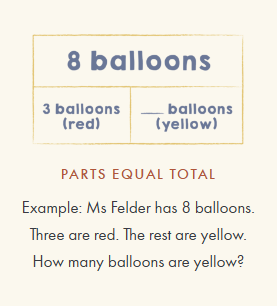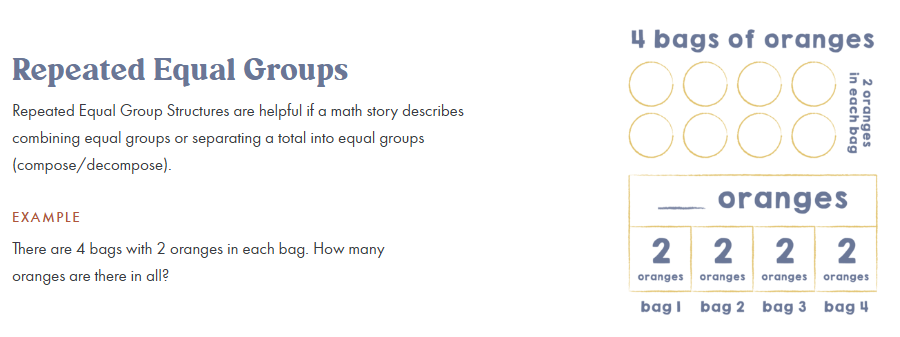October 4, 2023
Updated July 30, 2025
I once heard a math teacher describe word problems as “the bane of her existence”. I completely “Word problems are the bane of my existence.” I once heard a math teacher describe math stories this way, and I completely get it. There are common challenges across many classrooms: students don’t know what the problem is asking, choose random operations, or give up completely when faced with a word problem. I experienced the same thing when I was in the classroom, and that’s why I created Structures of Equality (SoE).
There are 3 SoE and they can be used to represent any problem type in K-5 mathematics. They look similar to bar models, but have specific characteristics that set them apart and help students understand the relationships between the numbers in the story so they comprehend what’s happening.
These distinct characteristics are:
- Values
- Labels and descriptors (to name the unit, or thing we are counting)
- Representations of equality
The 3 structures
There are 3 structures: Parts Equal Total (PET), Compare, and Repeated Equal Groups (REG). The first one we typically model for students is Parts Equal Total and we explored that representation in my last blog.
Students can draw a PET model when a math story describes composing two or more parts to form a total or decomposing a total into two or more parts. This model helps students visualize the relationship between the parts and the total.

The next structure we’ll explore is Repeated Equal Groups (REG).
An exploration of Repeated Equal Groups (REG)
When the math main idea of a story describes composing equal groups to form a total or decomposing a total into equal groups, we use the REG structure. You’ll notice each structure is named for exactly what it represents.
Let’s look at an example story.

You’ll notice students can draw this as an array, or as a Parts Equal Total model. Both models show there are 4 equal groups with 2 oranges in each group. They are clearly labeled so students know what each part of the model represents.
In the array, students can see that each group has an equal value. In the PET, they can see this too, along with the fact that those parts are equal to the total.
You can explore more examples of REG structures here.
Conclusion
You’ll notice that modeling with an SoE is more complex than traditional models. But it’s the detail that makes them a useful tool to help students actually understand what’s happening when they encounter a word problem.
Although these structures require an additional time investment up front, once students internalize them, you gain that time back. You no longer need to constantly reteach and scaffold. You’ll give your students the tools they need to successfully tackle word problems on their own.